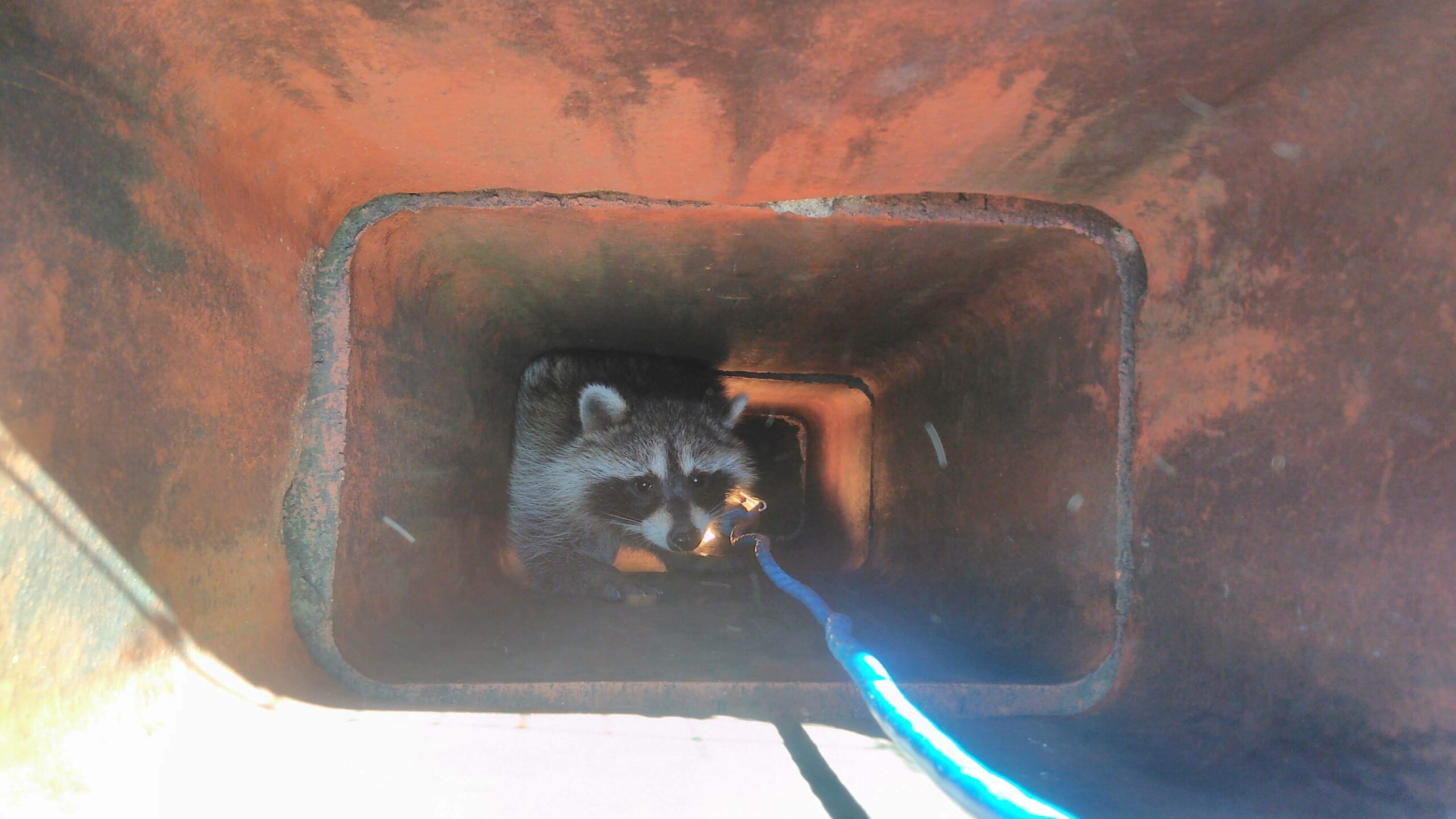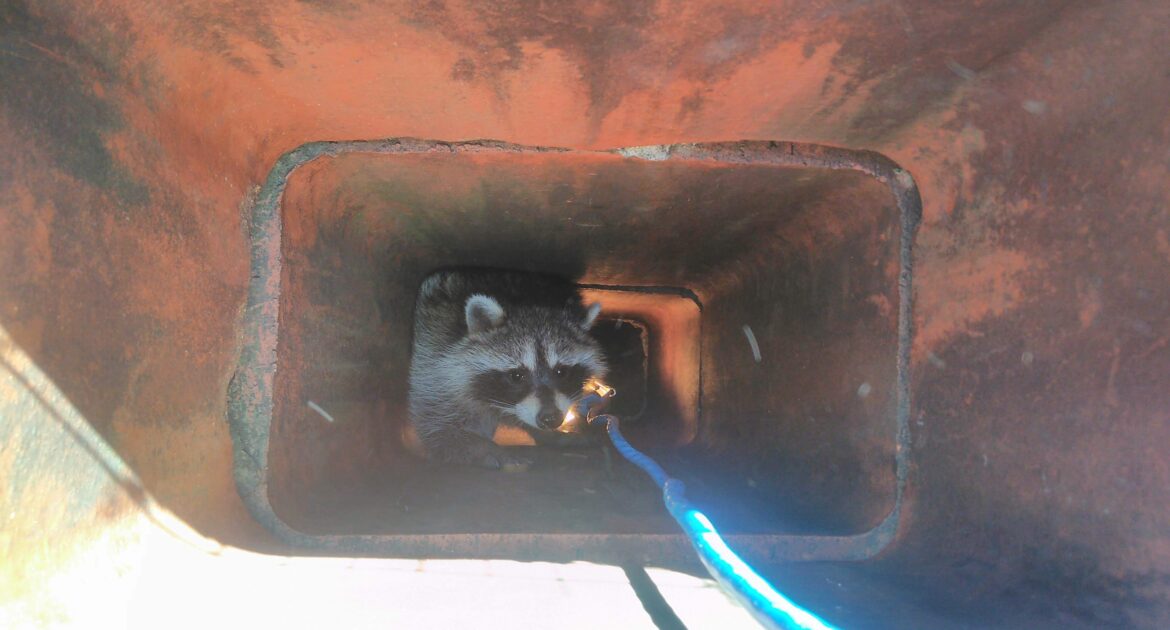Finding animals in your chimney can be an unpleasant surprise. Chimneys often attract raccoons because they provide warmth, safety, and shelter, similar to natural hollow spaces. While they may seem harmless, raccoons in your chimney can cause loud noises, health risks, and structural damage.
Removing them isn’t simple and requires a humane, skilled approach—especially if babies are involved. Attempting to handle it yourself can harm the animals, damage your chimney, or even lead to legal issues due to wildlife laws. That’s why it’s best to leave it to professionals like Skedaddle Humane Wildlife Control in Milwaukee.
In this article, we’ll explain the risks involved and why expert handling is crucial for safely resolving these situations.
Delicate Handling of Mothers and Babies
Chimneys are often chosen by mother raccoons as a safe place to care for their young. The tight, dark area provides a secluded spot free from predators. However, this makes the removal process more complex. If the mother feels her babies are in danger, she may become highly defensive. Quick or rough handling could result in the young getting separated from their mother—or worse, injured in the process.
For us, this is where the humane aspect of our work comes in. We prioritize the safe removal of families without causing harm or stress. It’s not just about clearing the area; it’s about ensuring both mother and babies remain healthy and together.
Stress and Panic in Raccoons
When animals feel cornered, they panic. Wild animals aren’t used to human contact, and a sudden intrusion into their perceived “den” can scare them. Frightened animals are unpredictable. They may scratch walls, dart deep into the chimney, or injure themselves trying to escape.
These behaviors don’t just put the animals at risk—they can also escalate the problem for you. Careless handling can lead to them finding new ways into your home or causing messes that are costly to clean. That’s why every move we make during the process is calculated. Our team is trained to minimize stress, ensuring the animals are guided out calmly.
Parasite and Disease Exposure
Even after the animals are gone, they could leave behind an unpleasant mess. Wild animals are known to carry diseases and parasites that can be hazardous to humans. One example is the raccoon roundworm, a dangerous parasite found in their waste. If feces or urine is left unchecked, it can contaminate your chimney and, eventually, your home.
For homeowners, this is a serious health issue. Cleaning up after a wildlife infestation isn’t just a matter of grabbing a broom. It takes the right safety gear, tools, and expertise to properly decontaminate the area and avoid exposure to harmful pathogens.
Aggressive Behavior
Animals in distress can lash out, especially mothers trying to protect their babies. If a cornered mother feels threatened, she may act defensively. This situation can quickly become dangerous for anyone unprepared to handle it. Growling, scratching, and charging are just a few ways an animal might defend its territory.
Because of this, we approach every situation with caution and respect for the animal’s instincts. Using specialized techniques, we keep the process safe for everyone involved—humans and animals alike.
Fire Risks
Wild animals don’t pack light. When they move into your chimney, they bring leaves, feathers, twigs, and other materials to build their nest. Once this nest is abandoned, it can obstruct airflow in your chimney, creating a significant fire hazard. Chimney fires are incredibly dangerous and can spread rapidly through your home.
Professionals not only ensure the safe removal of animals, but we also thoroughly inspect the area to clear out any debris that could lead to future problems. Keeping your home safe is just as important as handling the animals.
Damage from Improper Tools
Trying to remove animals from a chimney without the right training or tools can cause serious damage to your home. Chimney liners, vents, and other essential components are easy to accidentally break during a hasty removal attempt.
Our team ensures that this doesn’t happen. With the right equipment and techniques, we remove the animals while keeping the structure of your chimney intact. Repairs caused by improper handling can be costly, so prevention is always the better option.
Nesting Material Hazards
Nests built inside chimneys are more than just inconvenient—they’re dangerous. A tightly packed nest made of flammable materials like twigs and leaves can clog the flue, leading to smoke or gases being pushed back into your home. Without proper cleaning, these hazards could linger long after the animals have left.
Once we’ve removed your uninvited guests, we clean out all the leftover nesting debris, leaving your chimney safe and functional. It’s a step that ensures no hidden dangers remain.
Protected Wildlife Regulations
Raccoons and many other kinds of wildlife are protected under state and federal laws. That means attempting removal on your own could accidentally result in an illegal action, particularly if it causes harm to the animals or separates infants from their mothers. Fines and penalties aside, humane treatment is simply the right thing to do.
At Skedaddle Humane Wildlife Control, we follow regulations and best practices for wildlife management to ensure every operation follows humane standards.
Ensuring Animal Welfare
Protecting the welfare of animals is one of the cornerstones of what we do. Instead of live trapping or relocating, which can be stressful and harmful to animals, we use exclusion techniques like one-way doors. These doors allow an easy exit for the animals but prevent them from getting back inside.
Once the chimney is cleared, we take steps to seal off access points. This ensures the problem doesn’t repeat itself while also preserving the animals’ safety. Humane practices are non-negotiable in this line of work.
The Need for Specialized Equipment and Expertise
Removing animals from chimneys is a job best left to professionals. Here’s why:
- Thorough Inspections: We’re equipped to find exactly where the animals are without disturbing them unnecessarily.
- Use of One-Way Doors: Proper installation ensures the animals leave safely, with no chance of re-entry. Timing and placement are essential to making this work effectively.
- Sealing Entry Points Post-Removal: After the removal, we secure these openings to prevent future issues.
Our specialized equipment and training ensure the process is efficient, humane, and safe for your home.
When wildlife finds its way into your chimney, it’s tempting to try removing them yourself. But the risks—to your health, your home, and the animals—make professional help the better choice.
A Safe Solution for Your Home
To avoid these issues in the first place, it’s helpful to understand how to keep raccoons away—sealing your chimney, addressing what attracts wildlife, and scheduling regular inspections can all make a big difference. Prevention is one of the easiest ways to protect both your home and the animals.
If you’ve already heard odd sounds up your chimney or suspect unwanted visitors, it’s time to act. Our team at Skedaddle Humane Wildlife Control in Milwaukee has the experience, tools, and knowledge to handle the situation effectively. Our team offers humane, reliable methods to clear your chimney and keep it safe long-term.
When it comes to wildlife control, trust experts who understand the delicacy of these operations. If you think you might have animals in your chimney, contact us today to schedule a consultation. We’re here to help your home stay safe—and wildlife-friendly.




